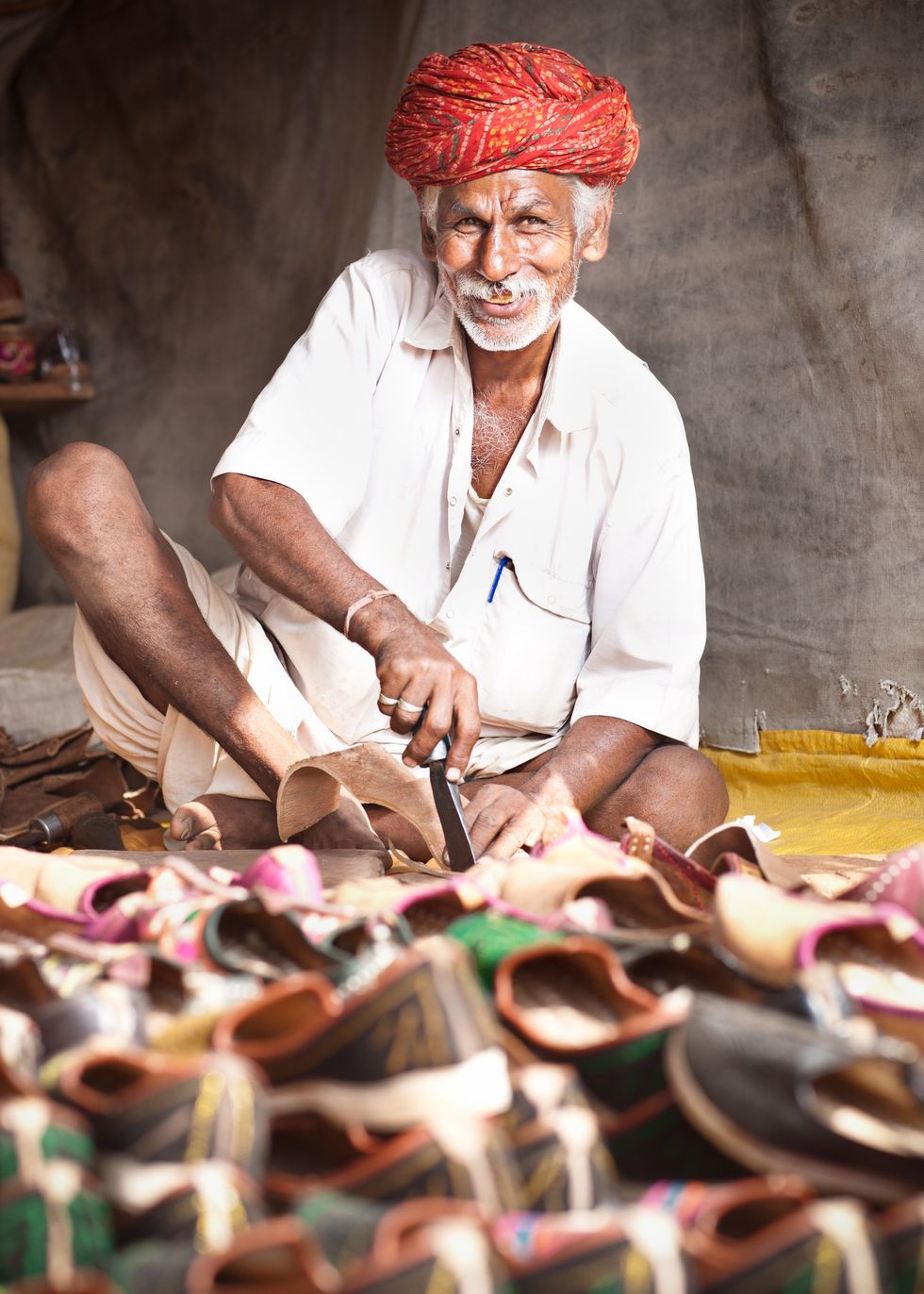A few weeks ago, Mukteshwar Kalo, a member of the Kondh tribe in eastern India, suddenly came down with a fever, cough and aches.
Nearly anywhere else, these symptoms would be enough to raise fears of COVID-19, but 58-year-old Kalo, who lives in Surupa village in the state of Odisha, was not worried.
His wife treated him with remedies made from plants in a nearby forest: a drink with the leaves of the night-flowering gangasiuli jasmine to get rid of his fever and pains and a solution of extract of patragaja, or air plant, for his cough.
"The leaves, roots and other resources collected from our forests cured me in less than a week," said Kalo.
As India continues to battle the COVID-19 pandemic, health experts and environmentalists say the climate-resilient, nature-based lifestyles of many indigenous communities are helping protect them from the virus and its economic impact.
The same practices that keep the villagers' climate-heating emissions low and provide them with food also prevent them from catching and spreading the virus, said Y. Giri Rao, executive director of Vasundhara, an Odisha-based conservation nonprofit.
Preserving forests, protecting wildlife and managing natural resources wisely help keep indigenous people healthy, he said.
"The tribes in the region have been conserving their native biodiversity for generations through their community-led practices," Rao said.
"This is paying off during these tough times of global pandemic, in terms of food, medicinal and livelihood security."
With more than nine million reported coronavirus cases, according to health ministry data, India is the second-worst affected country behind the United States.
Odisha state alone has had more than 320,000 confirmed cases of COVID-19.
But Bhimsen Kisan, head of the local government body for Surupa and a dozen other villages, told the Thomson Reuters Foundation there had been no known cases in any of those villages.
If local people do get sick, their symptoms are mild and do not last more than a few days, so there has been no need for anyone to get tested for the virus, he said.
Dr. Debananda Sahoo, assistant professor of general medicine at the All India Institute of Medical Sciences in Bhubaneswar, said the natural diets of many indigenous villagers strengthen their immune systems, key to keeping the virus at bay.
Wild, organic fruits and vegetables have high levels of vitamin C and vitamin E, Sahoo noted.
"Wide varieties of tubers, wild fruits, leaves, roots (and) mushrooms gathered from the forests and regularly consumed by the indigenous communities are rich in nutrients and antioxidants," he said.
"Most importantly, they are free from chemical fertilisers and pesticides, thus very pure and effective."
ANTISEPTIC SOLUTION
Conserving natural resources also makes indigenous communities economically self-sufficient, said Ipsita Behera of Banaja Banijya Sangha, a women's collective trading in forest products, like tamarind and chia seeds, in and around Surupa.
In many parts of Odisha, Village Forest Protection Committees decide which resources can be collected and where in the forest, allowing other areas to rejuvenate, she said.
Villagers gather plants and fruits according to those limits, which prevents over-exploitation, she noted.
And cutting trees for wood is forbidden, with communities getting all their fuel from dry leaves and branches on the forest floor.
This careful resource management cuts down on the need for villagers to interact with outsiders for food or work, further reducing their chances of infection, Behera said.
"When lockdowns, quarantines and travel bans during the peak of the pandemic made life difficult for people in cities, (it) stayed comparatively easier for these communities," she said.
In Surupa village, Hirabati Kalo, a 45-year-old mother of three, pointed to the mahua tree as an example of how the community ensures everyone uses only the resources they need.
Villagers use the flowers of the mahua to make a solution with antiseptic qualities and take two spoonfuls each day in a bid to keep the novel coronavirus away, Kalo said.
They also spray the solution along the entry and exit points of the village and outside their homes.
"We never pluck the mahua flowers from the tree, but wait for them to fall off after ripening. Only then we collect them from the ground," Kalo explained.
Several villages in Chhattisgarh state have found other ways to use mahua flowers to ward off the virus, including making them into alcohol for natural hand sanitisers, said Anubhav Shori, an indigenous rights activist in Mankeshri village.
TRADITION AND SCIENCE
Dr. Rimita Dey, a critical care specialist treating COVID-19 patients in Kolkata's Peerless Hospital, said traditional medicines could help scientists develop more effective treatments and vaccines, with proper study.
"The value and efficacy of such traditional healing systems and plants have long been recognised," she said.
"But we need to have more robust research and trials... especially of the ingredients used, their specific dosage and concentration - to establish them scientifically." In Godrapara, another village in Odisha state with no reported coronavirus cases, 75-year-old folk-healer Chamara Kisan is certain his community's harmonious relationship with nature has kept them safe since the pandemic began.
One of his favourite treatments for viral fevers, coughs and colds is to boil the leaves of a local herbaceous plant called bhui neem, commonly known as "king of bitters", to form a concentrate that is drunk twice a day.
A spoon of powdered bark of ashwagandha, also called Indian ginseng, stirred into a cup of warm milk acts as an analgesic, reduces inflammation and builds immunity, he said.
And when giloy shrub branches are ground and boiled with water, the solution helps clear congestion and chest infections, Kisan added.
"We take care of the forests and forests look after us - what is there to worry about (with) COVID?" he asked.















 Prada confirms Kolhapuri chappals inspired its 2026 Milan collectionInstagram/
Prada confirms Kolhapuri chappals inspired its 2026 Milan collectionInstagram/ Kolhapuri chappals have been crafted for centuries and received GI tag in 2019 iStock
Kolhapuri chappals have been crafted for centuries and received GI tag in 2019 iStock 
 Shefali Jariwala dies at 42 after cardiac arrest, industry mourns Kaanta Laga starInstagram/
Shefali Jariwala dies at 42 after cardiac arrest, industry mourns Kaanta Laga starInstagram/ Shefali Jariwala was married to actor Parag Tyagi,Instagram/
Shefali Jariwala was married to actor Parag Tyagi,Instagram/